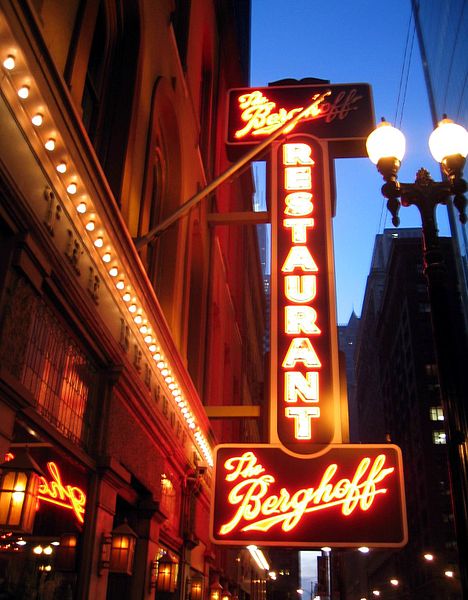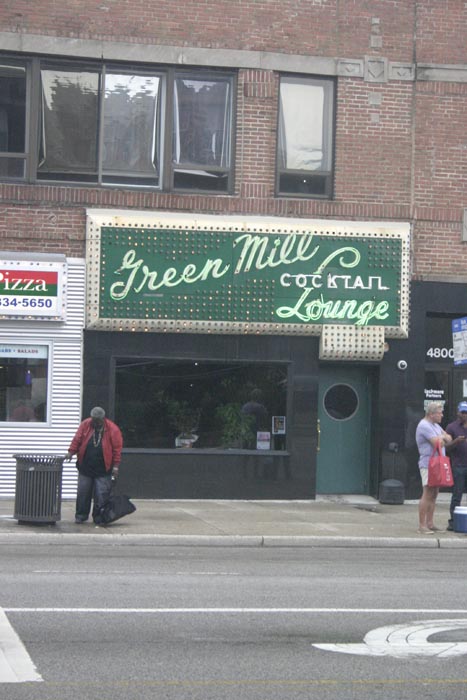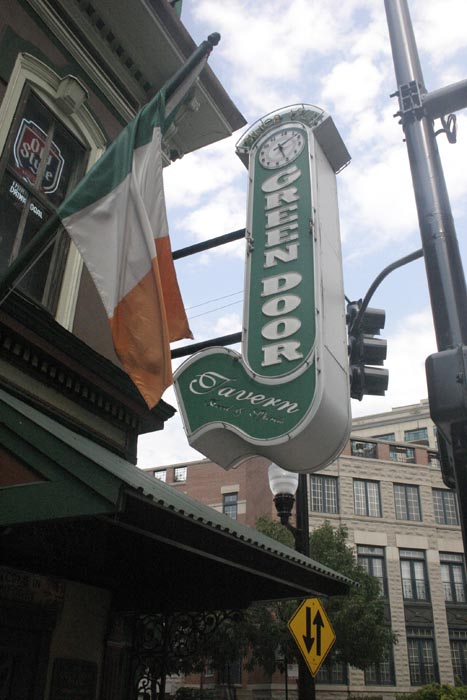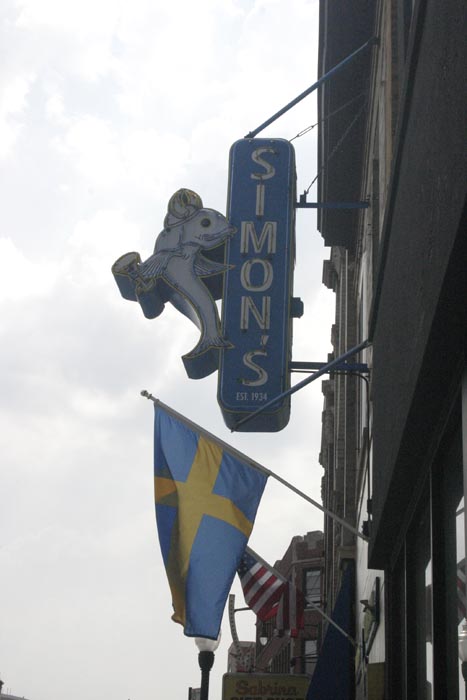| Schaller’s Pump, 1881-This bar in Chicago’s Bridgeport area has been serving straight since 1881, including during prohibition. In fact, during probibition you had to be screened through a peephole in the wall. Also during prohibition that place got the “Pump” part of its name when the next door brewery would pump beer directly in. The place has also been a longtime favorite by the Democratic party of Chicago—it’s a stone’s throw from the 11th Ward headquarters—and was the second office for a number of Chicago’s mayors. |  This photo of Schaller's Pump is courtesy of TripAdvisor |
| The Berghoff, 1889-The Berghoff was opened by Herman Berghoff to showcase his beer, which he sold for a nickel. They added café-style munchies as well—sandwiches and the like—but never strayed far from their original reason for opening. During prohibition The Berghoff was one of the few joints in town that reportedly went dry, staying open by converting to a full-scale restaurant and selling near-beer (which they still sell). After prohibition was over they were able to snag liquor license #1. The place has closed, reopened and re-imagined itself in recent years, but luckily they’ve been able to maintain the same address |  |
| Green Mill, 1907-Truth be told it was called Pop Morse’s Road House in 1907, but the address has stayed the same even if the name changed. The name changed, by the way, because this place was to be America’s answer to the Moulin Rouge in Paris. Moulin Rouge literally translates to Red Mill, and so the Green Mill seemed natural. When the Green Mill opened in 1912 it had pretty much everything the Moulin Rouge did: dancing girls, champagne fountains, expansive ball rooms, and other such excess. When prohibition was passed the place downsized to its current lounge and operated as a speakeasy, at one time co-owned by “Machine Gun” Jack McGurn, one of Al Capone’s notorious enforcers. |  |
| Green Door Tavern, 1921-Opened as a speakeasy and restaurant in 1921, the Green Door Tavern was supplied by Irish mobster Dean O’Banion. Below the main bar is the elegantly appointed speakeasy and it’s easy to imagine a bunch of mobster and ne’er do wells rubbing elbows with Chicago’s elite. The place is aptly named for what the green door symbolized during prohibition. It was common knowledge at that time that a door painted green meant there was a bar on the other side. In fact the door leading from the street to the underground speakeasy is still there, just down from the entrance, and yes it’s still painted green. After prohibition the Green Door came out of hiding and became the bar/restaurant it is today. |  |
| Simon’s Tavern, 1927-When Simon Lundberd emigrated from Sweden in the early 1900’s he dreamed of owning his own business. After winning citizenship in World War 1 and then saving his money by working on the railroad, he was able to open a small café in Andersonville, the Swedish enclave on the outskirts of Chicago. One day two men entered and ordered coffee. They then poured some whiskey into the coffee and asked Simon what he thought. He thought it was pretty good so they made him an offer: all the whiskey he wanted and they’ll make sure he’s left alone. He agreed and his cafe soon became the go-to place for a drink in the neighborhood. Business go so good in fact that he had to move to his current location. After prohibition he went legit and Simon’s has been a neighborhood meeting place ever since. |  |

